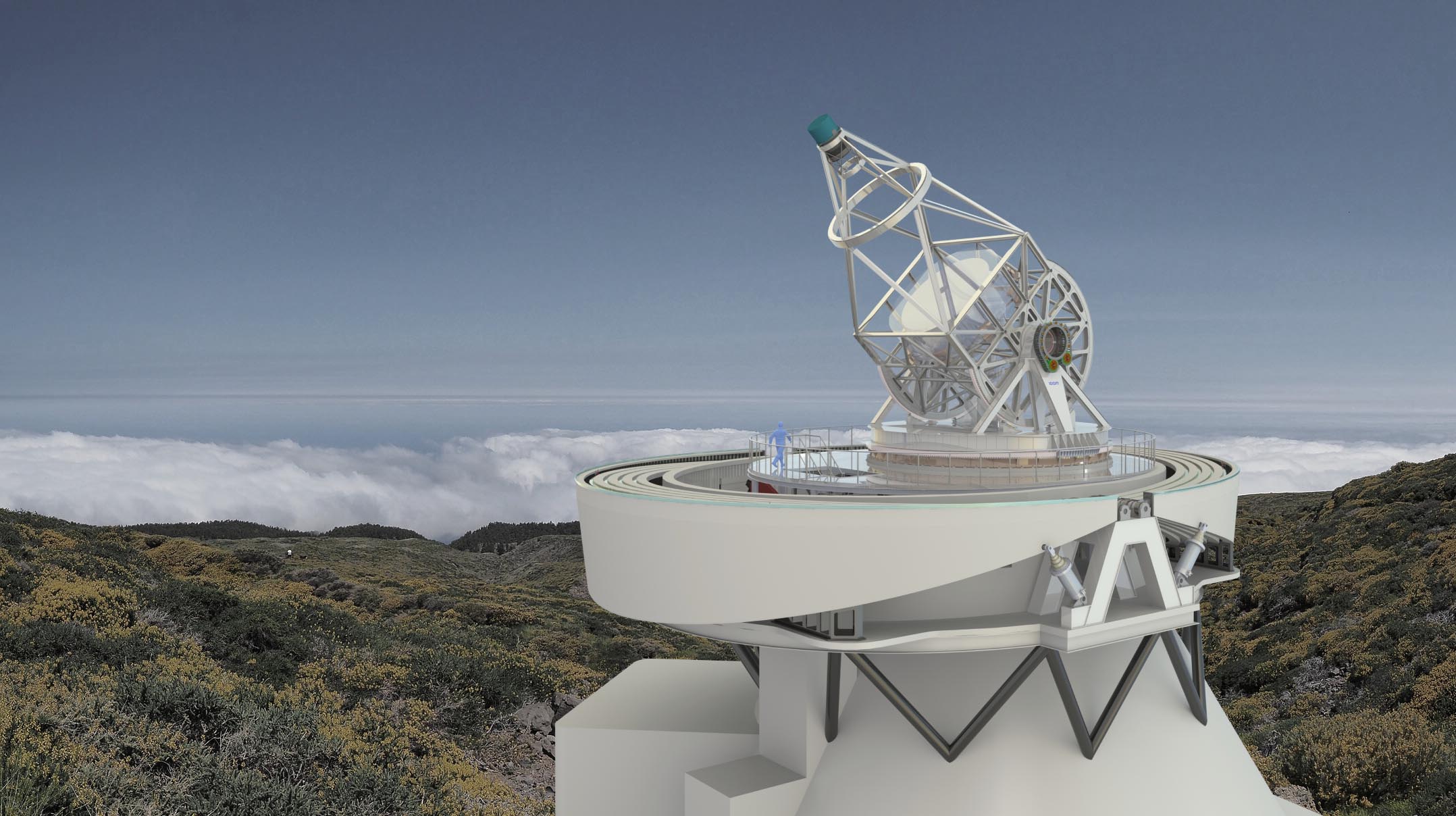EST PROJECT
Executive summary
- The European Solar Telescope (EST) will be the largest solar telescope ever built in Europe, pursuing unique observations of the magnetic processes taking place on the Sun.
- EST will have a 4.2-m primary mirror and the latest technology available, giving astronomers the most powerful tool ever conceived for observing the Sun.
- EST will be deployed in the Canary Islands, a first-class location thanks to the sky quality and excellent conditions for astronomical observations.
- The European Association for Solar Telescopes (EAST) is the entity promoting the project and intends to develop, construct and operate EST. It is currently formed by 26 research institutions from 18 European countries.
- EST was included on the ESFRI Roadmap in 2016 and is therefore considered a strategic research infrastructure for Europe.
- In 2023, the EST Foundation was established as the legal entity that will advance the project towards the creation of the European Research Infrastructure Consortium (ERIC) and thus the construction of the telescope.
EST Image Gallery
Would you like to explore what EST will look like through images and 3D animations? Click on the image to access the full EST image gallery.
Scientific Outline
EST will fill a gap not covered by any other instrument, either ground-based or space-borne, currently existing or in the immediate future: it will be able to examine magnetic coupling in the solar atmosphere from the deepest layers of the photosphere to the highest layers of the chromosphere, to uncover the thermal, dynamic and magnetic properties of the Sun's plasma at high spatial and temporal resolution.

The optical design and instruments of the EST are optimised for observation of the coupling of the atmospheric layers. Suitable techniques have been developed to determine the thermal, dynamic and magnetic properties of the plasma over many scales heights using imaging, spectroscopy and spectropolarimetry instrumentation. The EST will be equipped with a suite of instruments to observe simultaneously in various wavelengths, so that the solar photon flux can be exploited more efficiently than at other current or future ground-based or space telescopes. In order to meet its scientific goals the EST will also require high spatial and temporal resolution.
Foreseen Impact
A consensus exists among solar astronomers worldwide that a significant increase in observing capability is needed to understand the fundamental processes that control plasma physics in the Sun's outer atmosphere, approaching the following key questions as a priority goal:
- What can the Sun teach us about fundamental astrophysical processes? Observations of the Sun reveal intricate patterns of magnetic fields and the complex dynamics of a stellar atmosphere at the physically relevant spatial scales.
- What drives solar variability on all scales? The Sun changes on a wide range of spatial and temporal scales, displaying energetic phenomena over all scales. We do not fully understand and cannot accurately predict basic aspects of solar variability.
- What is the impact of solar activity on life on Earth? Solar magnetic activity variations induce terrestrial changes which can affect millions of humans on short and long time scales. We need to predict disturbances of the space environment which are induced by the Sun and to understand the links between the solar output and the Earth’s climate.
EST will incorporate adaptive optics and integral-field spectropolarimeters, with a precision of one part in 104, to observe the interaction of magnetic fields and plasma motions in the solar atmosphere at their intrinsic scales, which requires resolutions of about 10 km on the Sun.
Timeline
Since its Conceptual Design Study, started in February 2008 and finished in July 2011, the project has continued to grow and consolidate, bringing together the European scientific and technological community linked to the study of the sun.
Starting in 2013, during the Strategic Work Phase, EST was supported by two projects funded by the European Commission: GREST and SOLARNET. These projects aimed to take EST to the next level of development by undertaking crucial activities to improve the performance of current state-of-the-art instrumentation. Legal, industrial, and socio-economic aspects were also addressed as key issues for the realization of EST. Furthermore, the spin-off activities of these projects, access to world-class infrastructure, networking, and joint research and development activities provided the solar community with the opportunity to strengthen its scientific and technological capacity for the next generation of solar observations to be provided by EST.
The EST Preparatory Phase (PRE-EST) started in April 2017. The main aim of PRE-EST, funded by the European Union H2020 programme, was to provide EST international consortium and the funding agencies with a detailed plan for the implementation of EST. PRE-EST had an important component of technical work to be developed with the EST Project Office, funded by the Canary Islands Government, but also provided a framework for coordination work with the consortium partners to advance strategic issues such as governance, the future legal form and funding structure of EST.
The current Interim Phase serves as the link between the preparatory phase and the construction phase, paving the way for the implementation of the ERIC (European Research Infrastructure Consortium). The establishment of the EST Canarian Foundation as a legal entity during this phase marked a significant milestone in the project's progression towards subsequent phases (construction, commissioning and operation).
Here you can find detailed information on all the funding that the EST project has received at different stages since its inception.


